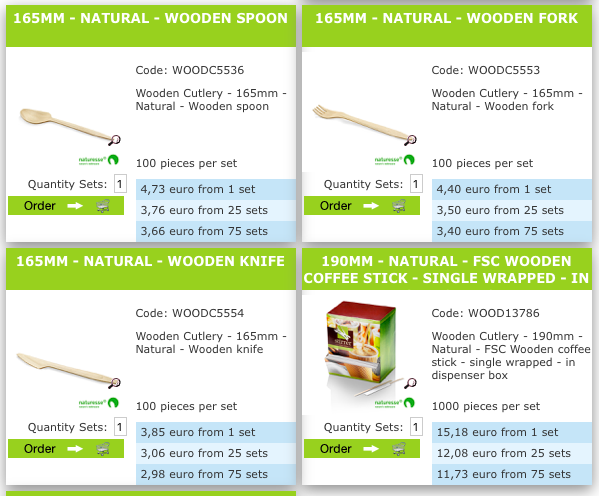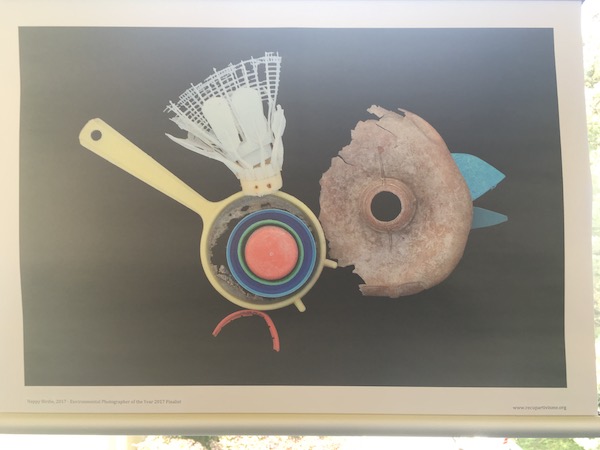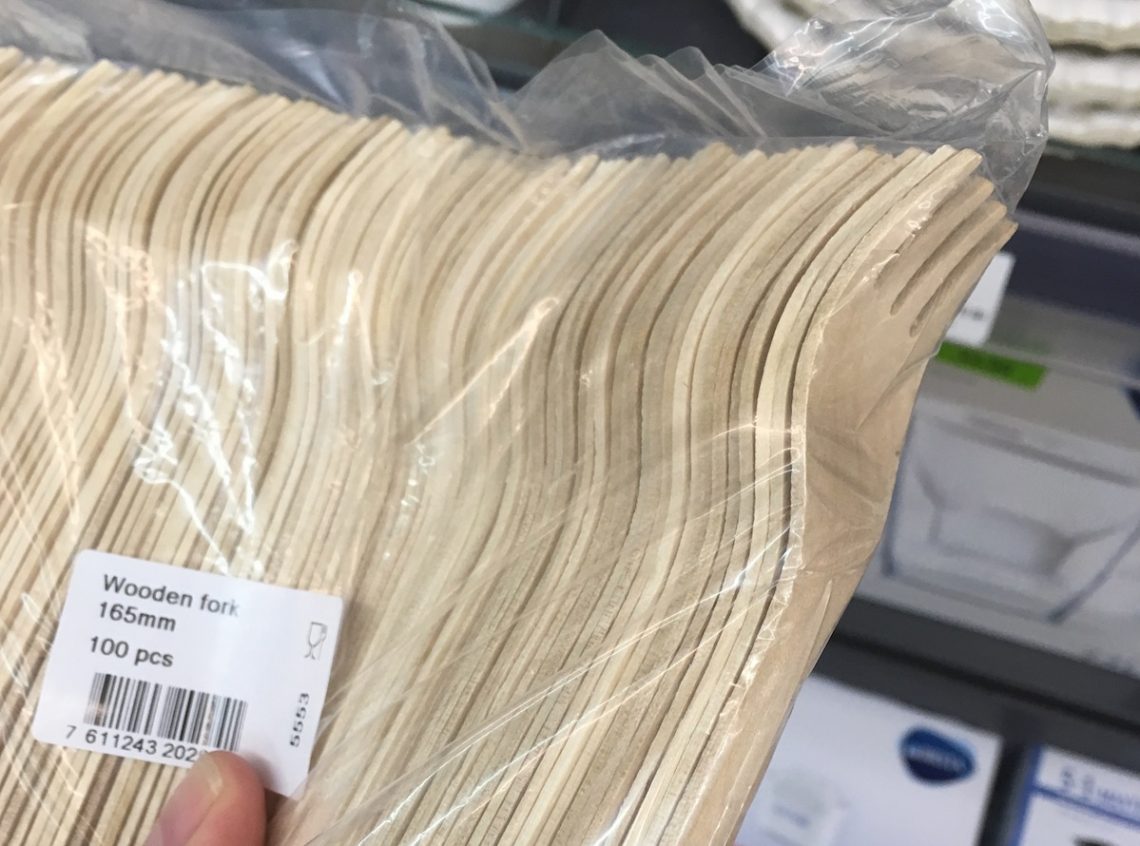I used to think there was no way to make disposable utensils without making them of plastic. But I was wrong. Like many, I just wasn’t thinking hard enough, or hadn’t been around enough.
Here, a package of 100 disposable wooden forks, available for just a few Swiss francs. In May of 2019 when this photo was taken the Swiss franc was on par with the US dollar.
These were spotted at the SAFI shop in the UN Palace of Nations in Geneva. But they weren’t made for the UN. From the looks of the package, they’re available in bulk from some goods vendor that the store purchases from, and they’re cheap. I didn’t record the exact price, but the same or very similar forks can be found online at about 3.4 Eurocents each in bulk (or about 3.8 cents US). Why aren’t these at every salad bar and hot food bar at every grocery store in my town?

It’s probably true that plastic is 75% cheaper. But at 3.8 cents, we are very close to zero, where a 75% difference is meaningless in absolute terms. Is 3.8 cents really not cheap enough to offer customers a disposable fork to eat a salad that costs $7.99? Is offering this fork going to put any food bar at a meaningful disadvantage to their competitors?
Let’s lay aside the argument that we should not be using disposable items at all. I want to get there too, but here, it’s a red herring — the vast mass of humanity is using disposable items today, and in our lifetime, they will continue to want to do so, and that is a very tough tide to turn. So let’s pretend for a moment that we just need to change the products that are made to serve that prevailing behavior.
I’ve seen various so-called compostable utensil technologies come and go at my favorite food bar. All of them contained plastic. I suspect they don’t really decompose but just turn into plastic dust after the glue that holds them together rots away. We used to think that was ok, but microplastics in our water have since taught us that it is not.
No, replacing plastic forks with wood isn’t going to keep whales and birds from dying with ingested plastic in their gut. Note that forks were not even needed to compose the brilliant waste plastic art seen below (which was on display at the UN a year before I found the forks in their store). But recognizing that there are alternatives, right now, to habitual plastic waste generation helps get us out of the plastic-think mindset when designing, and casually using, the products we find around us.

Nor will piecemeal measures, like banning plastic drinking straws, make any real difference — and those who are invested in the status quo, the business-as-usual interests — know it. So should we. There must be many thousands of types of plastic products out there, circulating on a daily basis after being purchased from their manufacturers for use or resale by businesses and being selected by customers, every day – not just straws and forks, but spoons, knives, coffee stirrers, rings around milk bottle caps, the caps themselves, the bottles, myriad plastic implements that go in our kitchen and garage; and the relentless, all-encompassing plastic film, that all such things are compulsively wrapped in to make them “present well” for sale. Are we really going to pass a law for each and every one of those things? Of course not.
Obviously, the solution is in systemic change. Everyone knows at a basic level that we aren’t going to get there by a thousand iterations of the plastic straw ban, applied to yet another individual product. It simply doesn’t get there from here. But what we do in the meantime is very important. Today — do we spend time on banning another product, or do we spend time on laying groundwork for systemic change? It is a fundamental question that does not seem to have an easy answer.


